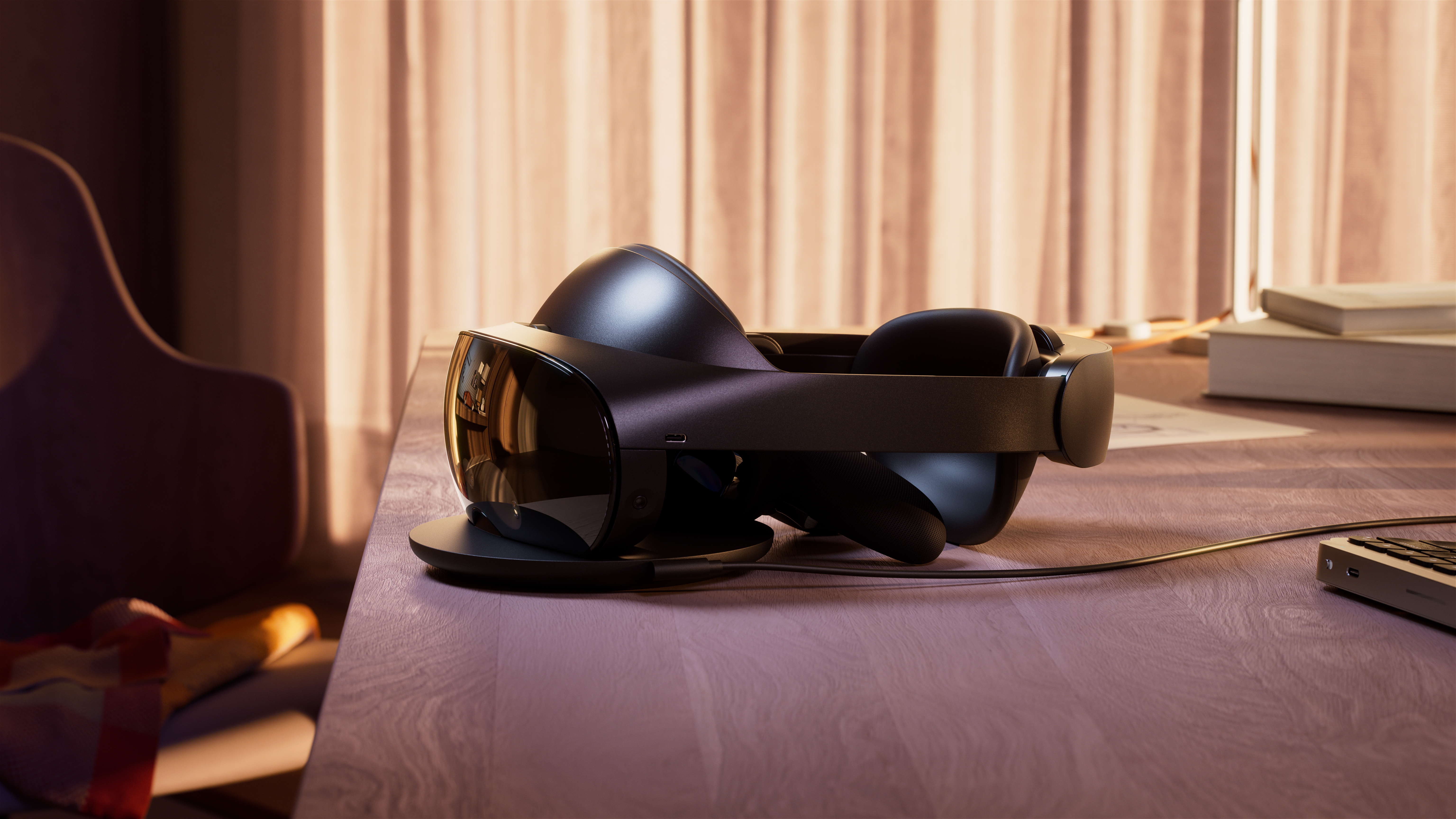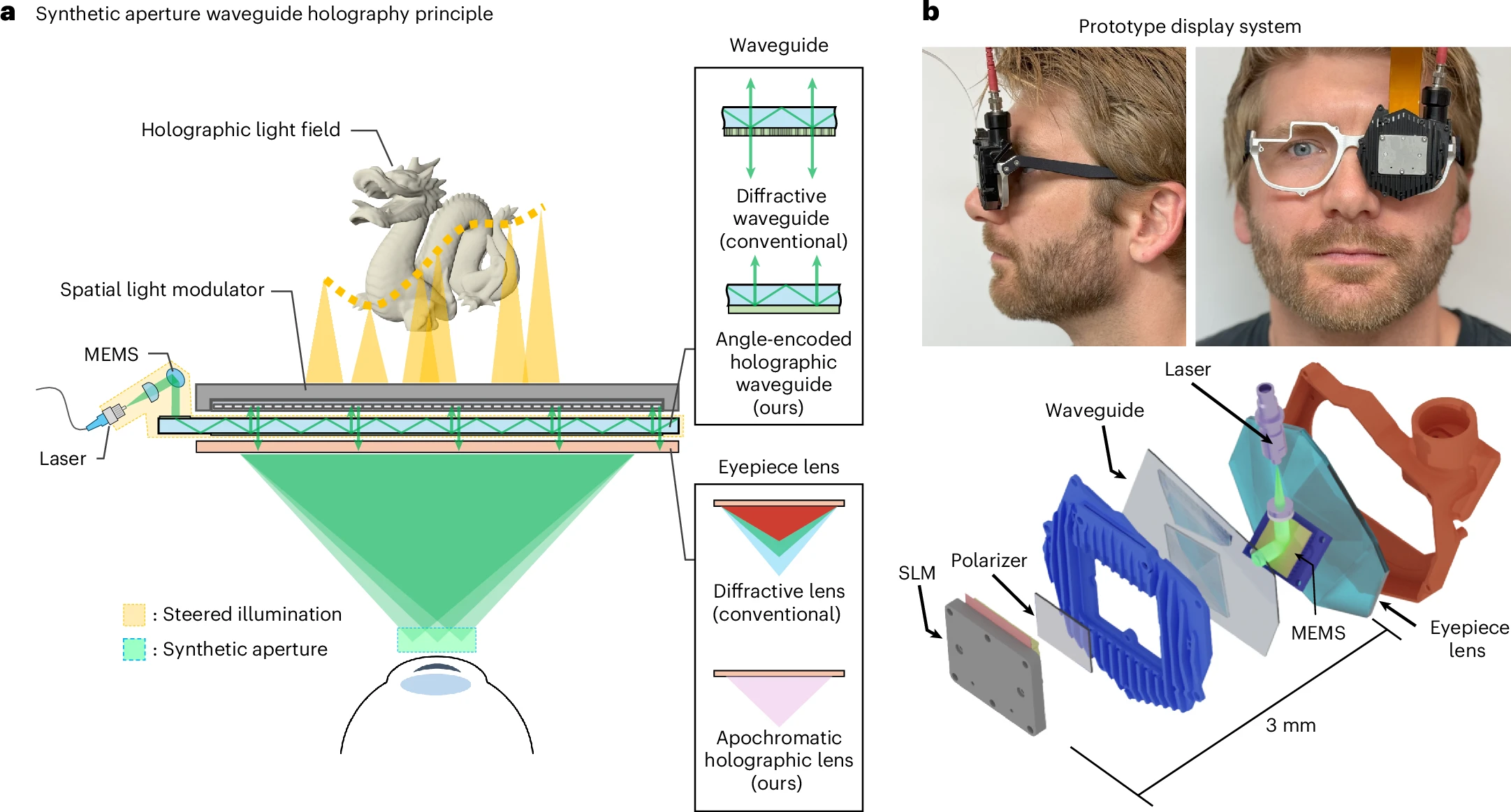Meta's mixed reality glasses make my Meta Quest 3 look like a boulder
This prototype design is super slim

- Meta and Stanford University researchers have developed new MR glasses
- These specs use holography to produce high-quality images
- Support rumors that Meta's headsets may turn into slim goggles
Meta’s newly published research gives us a glimpse at its future XR plans, and seemingly confirms it wants to make ultra-slim XR goggles.
That’s because Meta’s Reality Labs, alongside Stanford University, published a paper in Nature Photonics showcasing a prototype that uses holography and AI to create a super-slim mixed reality headset design.
The optical stack is just 3mm thick, and unlike other mixed reality headsets we’re used to – like the Meta Quest 3 – this design doesn’t layer stereoscopic images to create a sense of depth. Instead, it produces holograms that should look more realistic and be more natural to view.
That means it’s not only thin, but high-quality too – an important combination.

Now there’s still more work to be done. The prototype shown in the image above doesn’t look close to being a consumer-grade product that’s ready to hit store shelves.
What’s more, it doesn’t yet seem to pass what’s called the Visual Turing Test. This would be the point at which it's impossible to distinguish between a hologram and a real-world object, though that goal looks to be what Reality Labs and Stanford hope to eventually achieve.
Even with this technology still likely years (perhaps even a decade) from making it to a gadget you or I could go out and buy, the prototype’s design does showcase Meta’s desire to produce ultra-thin MR tech.
Sign up for breaking news, reviews, opinion, top tech deals, and more.
It lends credence to rumors that Meta’s next VR headset could be a pair of lightweight goggles about a fifth as heavy as the 515g Meta Quest 3.
Given these rumored goggles are believed to be coming in the next few years, they’ll likely avoid the experimental holography tech found in Meta and Stanford’s report, but if Meta were looking to trim weight and slim down the design further in future iterations, the research it’s conducting now would be a vital first step.

I, for one, am increasingly excited to see what XR tech Meta is cooking up.
It's Ray-Ban, and now Oakley, glasses have showcased the wild popularity that XR wearables can achieve if they find the sweet spot of comfort, utility, and price, with that first factor looking to be the most vital.
Meta’s other recent research into VR on the software side also highlights that a lighter headset would remove friction in keeping people immersed for hours on end.
This could lead to more meaningful productivity applications, but also more immersive and expansive gaming experiences, and other use cases I’m excited to see and try when the time is right.
For now, I'm content with my Meta Quest 3, but I can't deny it now looks a little like a boulder next to this 3 mm-thick prototype design.
You might also like

Hamish is a Senior Staff Writer for TechRadar and you’ll see his name appearing on articles across nearly every topic on the site from smart home deals to speaker reviews to graphics card news and everything in between. He uses his broad range of knowledge to help explain the latest gadgets and if they’re a must-buy or a fad fueled by hype. Though his specialty is writing about everything going on in the world of virtual reality and augmented reality.
You must confirm your public display name before commenting
Please logout and then login again, you will then be prompted to enter your display name.